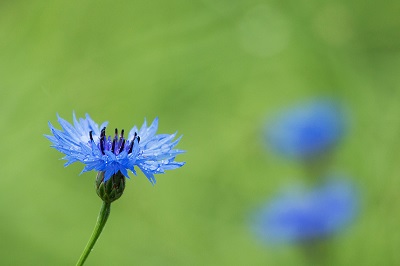More alien species are found in anthropogenic habitats than in natural habitats

There are a wide variety of species in the anthropogenic habitats, from the first inhabitants of waste lands and landfills, many of whom are considered weeds (e.g. dandelion, plantains), to exotic plants planted in parks and arboretums. Anthropogenic terrestrial habitats can be broadly divided into two: purposefully designed (parks, gardens, agricultural landscape, etc.) and areas used for other purposes to which plants and animals ‘return’ (roadsides, quarries, abandoned construction sites, etc.). Roofs, walls, ruins, and attics are a separate kind of habitat. The walls and ruins are suitable sites for plants that grow on rocks – for example, the protected wall-rue grows on the wall of the Kuressaare castle yard [1]. Seagulls nest on the roofs of tall buildings. The attics of old houses often have bats.
Cities and settlements are quite unstable habitats due to human intervention. In them, people are constantly trying to make their surroundings more pleasant – for example, by removing the so-called unfashionable species from their gardens and replacing them with ‘better ones’. Waste lands and other unmaintained areas will not persist in the city for more than twenty years. As a result, urban habitats have little native biota and human-tolerant plant species, cultivated plants, or alien species are more common [1].
Alien species are found to a greater extent in anthropogenic habitats than in natural habitats. In some cases, such as manor parks, arboretums, and gardens, the alien plants are purposefully planted and generally do not cause problems. However, wastelands, landfills, and roadside areas are favourable sites for invasive alien species, especially plants, which cause problems. For example, the surroundings of the farm buildings of the Soviet era that are now abandoned are favourable sites for the Sosnowsky’s hogweed.
In settlements and villages, a separate group of biota is formed by species that feed on the waste of human life – e.g. silverfish, isopods, true crickets, crows, gulls, rats, etc. This group also includes foxes that have come to live in settlements (on the one hand, they feed on human food waste and on the other hand, on small rodents and birds that feed on food waste) [1].
Man has also built a number of water bodies – reservoirs, ponds, ditches, etc. The biota of man-made water bodies depends on the age of the water body and whether and which species have been introduced there by humans themselves. The biota of the old ponds is therefore quite rich in species – in addition to the rich aquatic vegetation, they also host, for example, the northern crested newt, several species of leeches, insect larvae, etc. [2].
Many species have adapted to the agricultural landscape. For example, almost a third of Estonian bird species are closely related to agricultural landscapes. Continuous cultivation of the land mostly hurts perennial plant species. Therefore, annual plant species and those that tolerate frequent disturbances, such as weeds and other landfill plants and species that are less demanding in terms of their habitat, feel more at home in the agricultural landscape. Intensive land use also helps various alien species make themselves at home here. However, the non-cultivated edges of the fields are an important source of species diversity in agricultural landscapes, where many beneficial insects – plant pollinators and the natural enemies of pests – find their habitat and food [3].
Even in former and current military areas, nature feels at home. Military exercises have kept sandy soil open in many places, allowing species that prefer to live on open sand, such as sand lizards, to find habitat there.
Last modified: 15.11.2021
________________________
[1] Antropogeensed kooslused. Tõnu Ploompuu. www.tlu.ee › ~emeier › IVA › Inimtekkelised_kooslused
[2] I. Raa. 2016. Märka keskkonnahoidlikku põllumajandust: poollooduslikud kooslused hoiavad ja hoiatavad meid! https://www.maainfo.ee/index.php?article_id=5692&page=3265&action=article&
[3] T. Aavik, J. Liira. Kuhu küll kõik lilled jäid? Põlluservade tähtsusest. Eesti Loodus 2009/7
http://vana.loodusajakiri.ee/eesti_loodus/artikkel2846_2837.html